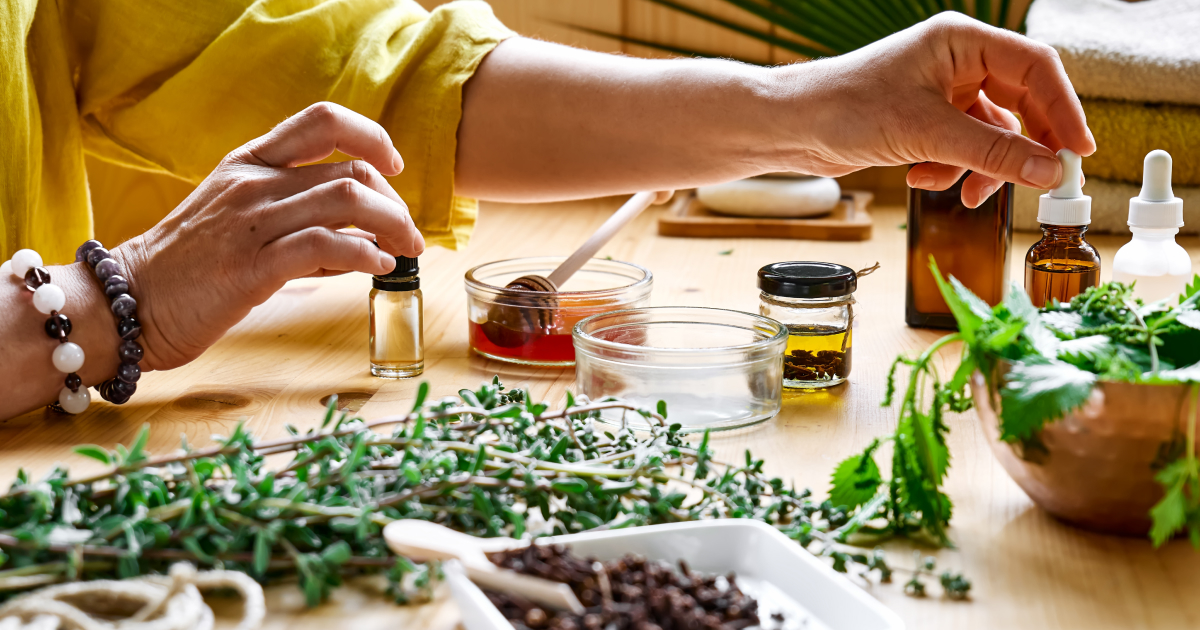Are you experiencing unexplained symptoms like headaches, digestive issues, skin problems, or fatigue that seem to come and go without warning? You might be dealing with histamine intolerance or sensitivity – a condition that affects millions of people but is often misunderstood and misdiagnosed.
Histamine is a natural chemical compound that plays important roles in your immune system, digestion, and brain function. However, when your body can’t properly break down and clear histamine, it can build up to problematic levels, causing a wide range of uncomfortable symptoms that can significantly impact your quality of life.
Many people suffer from histamine-related symptoms for years without understanding the connection. They might visit multiple doctors, try various treatments, and still struggle with persistent issues like chronic headaches, digestive problems, skin reactions, or unexplained fatigue. The frustrating part is that these symptoms can be unpredictable and seem unrelated to each other.
Understanding histamine sensitivity and learning how to support your body’s natural histamine-clearing processes can be life-changing. Unlike true allergies that involve immediate immune responses, histamine intolerance develops gradually and can be influenced by factors like diet, stress, medications, and overall health status.
In this comprehensive guide, you’ll discover everything you need to know about histamine in your body, from recognizing the symptoms of histamine overload to understanding what causes histamine buildup and implementing natural strategies to support healthy histamine metabolism.
What Is Histamine?
Histamine is a biogenic amine that acts as both a neurotransmitter and a signaling molecule in your body. It’s stored primarily in mast cells and basophils (types of white blood cells) and is released when these cells are activated by allergens, stress, injury, or other triggers.
When functioning properly, histamine helps protect your body from harmful substances, aids in digestion by stimulating stomach acid production, helps regulate sleep patterns, and supports proper immune function. However, problems arise when histamine levels become too high or when your body can’t break it down efficiently.
How Your Body Processes Histamine?
Your body has two main enzymes responsible for breaking down histamine:
- Diamine Oxidase (DAO): This enzyme breaks down histamine in your digestive tract and is your body’s primary defense against dietary histamine.
- Histamine N-Methyltransferase (HNMT): HNMT is responsible for breaking down histamine inside your cells, particularly in your brain and other tissues.
When these enzymes aren’t working properly or are overwhelmed by too much histamine, levels can build up and cause various symptoms throughout your body.
Sources of Histamine
Histamine comes from several sources:
- Endogenous Production: Your body naturally produces histamine as part of normal immune and digestive functions.
- Dietary Sources: Many foods contain histamine or trigger its release from your cells.
- Bacterial Production: Certain bacteria in your gut and in fermented foods can produce histamine.
- Environmental Triggers: Allergens, stress, medications, and other factors can trigger histamine release from your cells.
The Role of Mast Cells
Mast cells’ histamine release is a key factor in histamine-related symptoms. These immune cells are found throughout your body, particularly in areas that interface with the environment, like your skin, lungs, and digestive tract.
When mast cells are activated, they release histamine along with other inflammatory compounds. This process is normal and protective in appropriate amounts, but chronic mast cell activation can lead to excessive histamine release and symptoms of histamine intolerance.
Recognizing Histamine Sensitivity Symptoms

Histamine sensitivity can cause a wide range of symptoms that affect multiple body systems. Understanding these symptoms helps you recognize when histamine might be contributing to your health issues.
Digestive Symptoms
The digestive system is often the first place where histamine intolerance symptoms appear:
- Abdominal Pain and Cramping: Histamine stimulates stomach acid production and can cause cramping and discomfort, especially after eating high-histamine foods.
- Diarrhea or Loose Stools: Excess histamine can speed up intestinal motility, leading to loose stools or diarrhea.
- Bloating and Gas: Histamine can affect gut bacteria and digestive processes, leading to bloating and excessive gas production.
- Nausea: High histamine levels can trigger nausea, particularly after eating certain foods.
- Heartburn and Acid Reflux: While histamine helps produce stomach acid for digestion, too much can lead to excessive acid production and reflux symptoms.
Skin and Allergic Reactions
- Histamine hives and other skin reactions are common signs of histamine sensitivity:
- Hives and Rashes: Raised, itchy welts on the skin are a classic sign of histamine release and can appear anywhere on the body.
- Itching: Generalized itching without a visible rash can indicate systemic histamine elevation.
- Flushing: Red, warm skin, particularly on the face and neck, often occurs with histamine reactions.
- Eczema Flares: Existing eczema may worsen with histamine overload.
- Swelling: Histamine can cause swelling, particularly around the eyes, lips, and face.
Respiratory Symptoms
Histamine affects the respiratory system and can cause:
- Nasal Congestion: Stuffy nose and sinus pressure are common histamine-related symptoms.
- Runny Nose: Clear nasal discharge, similar to what you might experience with allergies and histamine reactions.
- Sneezing: Frequent sneezing, especially after eating or exposure to triggers.
- Asthma-like Symptoms: Wheezing, chest tightness, and difficulty breathing can occur with severe histamine reactions.
- Throat Clearing: Persistent need to clear the throat due to histamine-induced mucus production.
Neurological and Systemic Symptoms
- Headaches and Migraines: Histamine can trigger headaches and migraines, often accompanied by other symptoms.
- Fatigue: Chronic fatigue that doesn’t improve with rest can be related to histamine intolerance.
- Brain Fog: Difficulty concentrating, memory problems, and mental cloudiness.
- Sleep Disturbances: Histamine affects sleep-wake cycles and can cause insomnia or restless sleep.
- Anxiety and Mood Changes: Histamine can affect neurotransmitter balance and contribute to anxiety, irritability, or mood swings.
- Heart Palpitations: Some people experience rapid or irregular heartbeat with histamine reactions.
Common Causes of Histamine Buildup

Understanding what causes histamine to accumulate in your body helps you identify and address the root causes of your symptoms.
Enzyme Deficiencies
DAO Deficiency: Diamine oxidase deficiency is one of the most common causes of histamine intolerance. This can be genetic or acquired due to factors like:
- Certain medications that block DAO activity
- Intestinal inflammation or damage
- Nutritional deficiencies (particularly B6, copper, and vitamin C)
- Alcohol consumption
HNMT Deficiency: HNMT enzyme deficiency can be genetic and affects your body’s ability to break down histamine inside cells. This is less common than DAO deficiency but can contribute to systemic histamine symptoms.
Dietary Factors
High-Histamine Foods: Aged, fermented, and processed foods are typically high in histamine:
- Aged cheeses and cured meats
- Fermented foods like sauerkraut, kimchi, and wine
- Canned fish and seafood
- Leftover foods (histamine increases as food ages)
- Chocolate and certain nuts
Histamine-Releasing Foods: Some foods don’t contain histamine but trigger its release from your cells:
- Citrus fruits
- Strawberries and other berries
- Tomatoes
- Spinach and other leafy greens
- Alcohol
DAO-Blocking Foods: Certain foods can interfere with DAO enzyme activity:
- Alcohol (particularly wine and beer)
- Black tea and green tea
- Energy drinks
Gut Health Issues
- Small Intestinal Bacterial Overgrowth (SIBO): Certain bacteria produce histamine, and overgrowth can lead to excessive histamine production in your digestive tract.
- Leaky Gut Syndrome: Increased intestinal permeability can allow more dietary histamine to enter your bloodstream.
- Inflammatory Bowel Conditions: Conditions like Crohn’s disease or ulcerative colitis can damage the intestinal lining and reduce DAO production.
- Dysbiosis: Imbalanced gut bacteria can affect histamine production and metabolism.
Medications and Supplements
Several medications can interfere with histamine metabolism:
- Certain antibiotics
- Anti-inflammatory drugs (NSAIDs)
- Antidepressants
- Blood pressure medications
- Some pain medications
Stress and Lifestyle Factors
- Chronic Stress: Stress hormones can trigger mast cell activation and histamine release while also impairing your body’s ability to break down histamine.
- Poor Sleep: Sleep deprivation can affect immune function and histamine regulation.
- Hormonal Changes: Estrogen can stimulate histamine release and reduce DAO activity, which is why some women experience worsening symptoms during certain phases of their menstrual cycle or menopause.
- Environmental Toxins: Exposure to chemicals, pollutants, and other toxins can trigger mast cell activation and histamine release.
Natural Remedies to Clear Histamine

Supporting your body’s natural ability to process and clear histamine involves a multi-faceted approach that addresses diet, lifestyle, and targeted nutritional support.
Dietary Strategies
Low-Histamine Diet: Following a low-histamine diet is often the first step in managing histamine intolerance:
Foods to Avoid:
- Aged and fermented foods
- Processed and canned foods
- Alcohol, especially wine and beer
- Leftover foods (eat fresh foods within 24 hours)
- High-histamine fruits like citrus and strawberries
Foods to Include:
- Fresh meats and poultry
- Fresh fish (consumed within 24 hours of purchase)
- Most fresh vegetables (except tomatoes, spinach, and eggplant)
- Rice, quinoa, and other gluten-free grains
- Fresh herbs like basil, oregano, and thyme
- Coconut oil and olive oil
Meal Timing and Preparation:
- Eat fresh foods as soon as possible after preparation
- Freeze foods immediately if not consuming within 24 hours
- Avoid reheating leftovers multiple times
- Consider meal planning to ensure fresh food availability
Natural Antihistamine Foods
Certain foods have natural antihistamine properties and can help support histamine metabolism:
- Quercetin-Rich Foods: Onions, apples (peeled), broccoli, and leafy greens contain quercetin, a natural antihistamine compound.
- Vitamin C Foods: Fresh fruits and vegetables high in vitamin C can help support DAO enzyme function.
- Anti-Inflammatory Foods: Foods rich in omega-3 fatty acids, like fresh fish and flaxseeds, can help reduce overall inflammation.
- Probiotic Foods: Certain probiotic strains can help support healthy gut bacteria balance, though fermented foods should be avoided during the initial healing phase.
Lifestyle Modifications
Stress Management: Since stress can trigger histamine release, developing effective stress management techniques is crucial:
- Regular meditation or mindfulness practices
- Gentle exercise like walking or yoga
- Adequate sleep (7-9 hours nightly)
- Breathing exercises and relaxation techniques
Environmental Considerations:
- Reduce exposure to environmental toxins and allergens
- Use natural cleaning products and personal care items
- Consider air purifiers to reduce airborne allergens
- Maintain proper humidity levels in your home
Sleep Optimization:
- Maintain consistent sleep schedules
- Create a cool, dark sleeping environment
- Avoid screens before bedtime
- Consider natural sleep support if needed
Monitoring and Adjustment
- Regular Assessment: Periodically evaluate your symptoms and treatment effectiveness, making adjustments as needed.
- Seasonal Considerations: Be aware that histamine tolerance may vary with seasons, stress levels, and hormonal changes.
- Gradual Food Reintroduction: As your histamine processing improves, you may be able to gradually reintroduce some previously problematic foods.
- Professional Follow-up: Maintain relationships with healthcare providers who understand histamine intolerance.
When to Seek Professional Help?
While natural approaches can be very effective for managing histamine sensitivity, certain situations require professional medical evaluation and treatment.
Red Flag Symptoms
- Severe Allergic Reactions: If you experience histamine allergy symptoms like difficulty breathing, severe swelling, or rapid pulse, seek immediate medical attention.
- Anaphylaxis: This life-threatening histamine reaction requires emergency treatment and may indicate true food allergies rather than histamine intolerance.
- Persistent Severe Symptoms: If symptoms significantly impact your quality of life or don’t improve with dietary and lifestyle changes, professional help is needed.
- Unexplained Weight Loss: Significant unintentional weight loss warrants medical evaluation to rule out other conditions.
Diagnostic Testing
- Histamine and Metabolite Testing: Blood and urine tests can measure histamine levels and metabolites to assess your body’s histamine processing ability.
- DAO Enzyme Testing: Blood tests can measure DAO enzyme activity to identify deficiencies.
- Allergy Testing: Comprehensive allergy testing can help distinguish between true allergies and histamine intolerance.
- Gut Health Assessment: Testing for SIBO, leaky gut, and other digestive issues that may contribute to histamine problems.
Professional Treatment Options
- Functional Medicine Practitioners: These doctors specialize in identifying and treating root causes of histamine intolerance.
- Allergists/Immunologists: Can help differentiate between allergies and histamine intolerance and provide specialized treatments.
- Gastroenterologists: May be helpful if digestive symptoms are prominent or if gut health issues are suspected.
- Nutritionists: Specialized practitioners can help design and implement effective low-histamine diets.
Long-Term Management and Prevention
Successfully managing histamine intolerance requires a long-term approach that focuses on supporting your body’s natural histamine processing while preventing symptom flares.
Developing Your Personal Protocol
- Identifying Your Triggers: Keep a detailed food and symptom diary to identify your specific histamine triggers and tolerance levels.
- Creating Your Safe Food List: Develop a list of foods you tolerate well and can rely on during flare-ups.
- Meal Planning Strategies: Plan meals around fresh, low-histamine foods and develop systems for food preparation and storage.
- Supplement Protocol: Work with a healthcare provider to develop a targeted supplement regimen that supports your individual needs.
Lifestyle Integration
- Stress Management: Develop sustainable stress management practices that you can maintain long-term.
- Sleep Hygiene: Establish consistent sleep routines that support optimal histamine regulation.
- Exercise Considerations: Find forms of physical activity that support your health without triggering histamine release.
- Environmental Control: Create a low-histamine environment at home and work when possible.
Conclusion
Understanding how to remove extra histamine from your body and manage histamine sensitivity can make a big difference if you’re dealing with unexplained symptoms. Though histamine intolerance can be tricky to identify and control, combining the right diet, supplements, lifestyle changes, and expert guidance can greatly improve how you feel.
The key is to take a full-body approach that focuses on why histamine builds up and how to help your body process it naturally. This means eating a low-histamine diet, supporting enzymes like DAO and HNMT, calming overactive mast cells, and keeping your gut healthy.
Everyone reacts to histamine differently, so what works for one person might not work for another. That’s why it’s important to work with a healthcare professional who understands histamine intolerance and can create a plan that fits your unique needs.
Managing histamine sensitivity takes time and consistency, but with the right approach, most people see big improvements in their symptoms. The natural tips and strategies in this guide can help your body process histamine better and reduce the amount that builds up from food and the environment.
Whether you’re struggling with skin rashes, digestive issues, or other histamine-related symptoms, understanding how histamine affects your body is the first step toward relief. With proper care, you can lower your histamine levels, support your body’s detox systems, and feel more energized and balanced.
If you think histamine intolerance might be behind your symptoms, Conscious Medicine can help. Our team specializes in finding and treating the root causes of histamine sensitivity through a complete, functional medicine approach. We’ll help you understand your body’s histamine process, design a personalized plan, and guide you toward lasting wellness. Contact us today to start your journey to better health and vitality.
FAQ’s
1. What is a histamine dump at night?
A histamine dump at night refers to a sudden release of histamine in the body, often during sleep. This can lead to symptoms like itching, sweating, a racing heart, anxiety, or waking up suddenly. It may be linked to circadian rhythms, stress, or poor histamine breakdown.
2. Does B12 help with histamine?
Yes, vitamin B12 can help lower histamine levels. It supports the enzymes that break down histamine in the body, making it useful for people with histamine intolerance or high histamine symptoms.
3. What are the symptoms of too much histamine?
Too much histamine can cause headaches, skin rashes, itching, flushing, a runny nose, digestive issues, anxiety, and trouble sleeping. These symptoms often mimic allergic reactions but aren’t caused by allergens.
4. How long does it take to lower histamine levels?
It can take a few days to a few weeks to lower histamine levels, depending on the cause and treatment. Following a low-histamine diet, reducing triggers, and supporting gut health can speed up recovery.
5. What drinks reduce histamine?
Drinks that may help reduce histamine include water, herbal teas like chamomile or ginger, and fresh, low-histamine juices (like pear or coconut water). Avoid alcohol, energy drinks, and fermented beverages, which are high in histamine.
